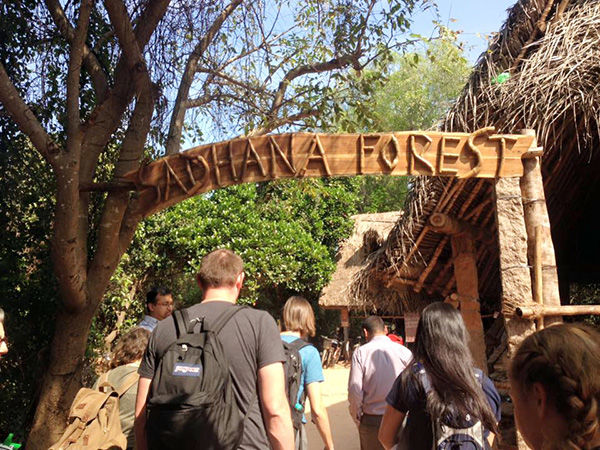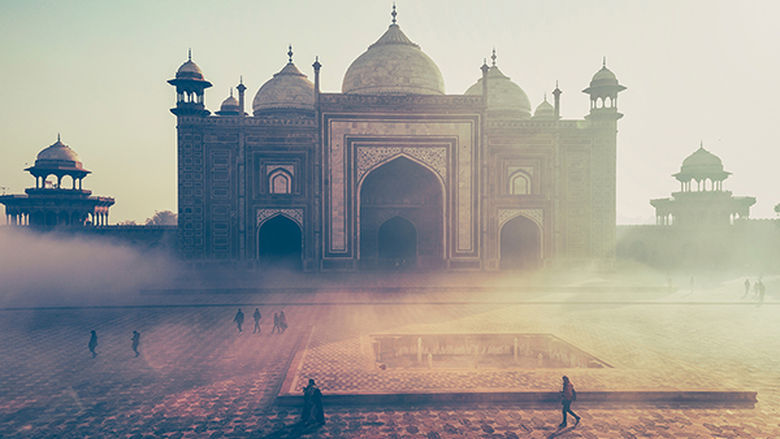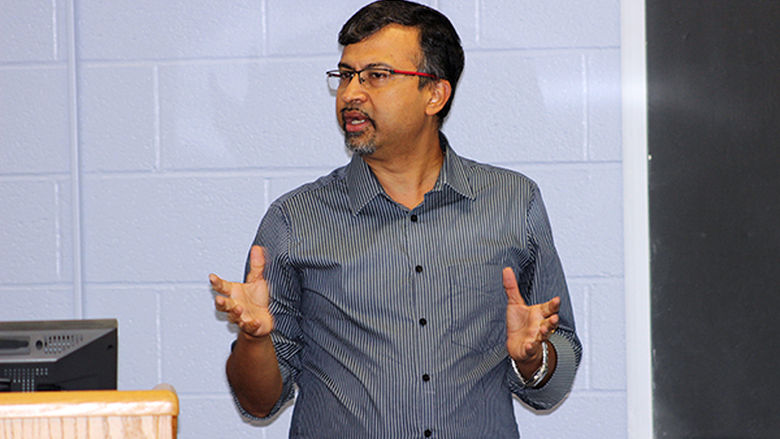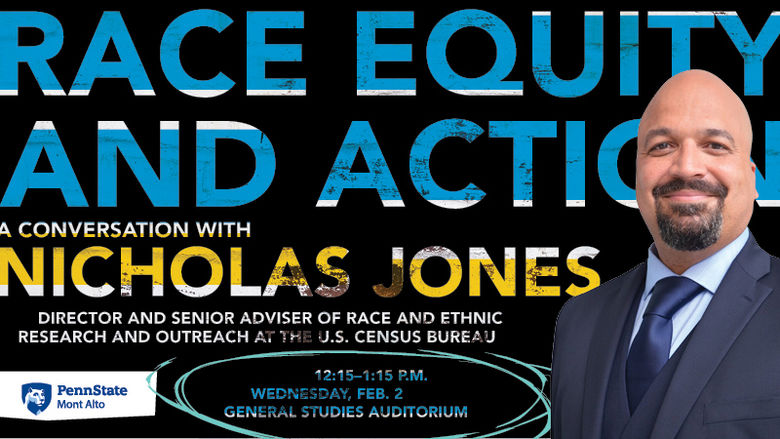
Penn State students Randi Leydig, Abigail Blinn and Jennifer Halterman pause for a photo during a tour of the Gandhi Museum.
MONT ALTO, Pa. — Penn State Mont Alto’s 13-day trip called "Incredible India" during winter break was eye opening, according to civil engineering student Randi Leydig.
“Living in America my whole life has really kept my mind on a one-way track, but being exposed to a country on the opposite side of the world has really opened my eyes and left me with a whole new perspective and acceptance of cultures and value of life,” said Leydig.
The brainchild of Deborah Mirdamadi, Penn State Mont Alto instructor in mathematics, the course ASIA 197/199, about India’s cultural and economic diversity, included a trip to India from Dec. 27 to Jan. 8. Two Mont Alto professors joined Mirdamadi in teaching the course and leading the trip — Somjit Barat, associate professor of marketing and coordinator of International and Intercultural Programs, and Elizabeth Brantley, instructor in forest technology.
Throughout the trip, each student studied an approved topic of their own interest as it relates to their major, discipline or degree. For many, the trip was their first global experience.
Leydig, who studied sacred architecture during the trip, was especially impressed with the Akshardham Temple. “It really impacted me because of all of the small details that contributed to its overall beauty and the significance of the building,” she said.
The crowded public areas fascinated forest technology student Josh Hersl. “I was amazed at how many people there were,” he said. “It was interesting to see how everyone seemed to make things happen and go about their daily lives even with the crowd. This is a lot different than what I would expect to see in America.”
Each of the nine students found deep meaning not only in their own experiences and fields of study but also in the collective.
The key lesson is that people and places are different, according to Barat. “The more you can open your mind to that, the better person you will be,” he said.
He also believes the experience will make the students more marketable. “Most companies today are multicultural, and employers are looking for candidates who have some international exposure,” said Barat.
According to kinesiology student Eliza Borromeo, the trip continually pushed her out of her comfort zone. “I was able to grow a new appreciation for the things I have along with a new goal — to help those who do not have as much,” she said.
Her study focuses on Indian diseases. “It’s one thing to read and research why diarrheal diseases happen, but it is another to see how pollution and drastic conditions can contribute to disease," she said.
Borromeo’s most indelible moments came while doing a service-learning project at one of the Mother Teresa Missionaries of Charity in Kolkata. While there, she cared for the elderly and children, some with mental issues. What she took away, she said, was the experience that even small acts of kindness can create some sort of change.
“You may not be the only reason for the change, but at least you can be the page, a sentence, or a word in a chapter of people’s lives,” she said.
Their travels took them through the cities of New Delhi, Agra, Chennai, Puducherri and Kolkata. Along the way, they experienced the magic of India through its historic sites, people and a variety of cultural highlights. They saw several historic sites, including the Mausoleum of Emperor Humayun, the incomparable Taj Mahal, the Gandhi Museum and the Akshardham Temple. They visited Auroville and experienced the sustainable lifestyle of those restoring the Sadhana Forest. Some did a service-learning project at one of the Mother Teresa Missionaries of Charity. They toured the Heritage Institute of Technology in Kolkata, and met with Indian students and administrators. They also took a boat ride along the Ganges River, where they enjoyed Kolkata’s skyline at dusk and observed an evening worship service at the Belur Math — a large, lavish temple on the banks of the river in Belur, built in the late 19th century.
“That is something the students would not be able to experience in any other location or environment,” said Barat. “It was a very touching moment for them.”
It was also a high point for Barat. “I never dreamed in my wildest imagination that I would be taking my students to India and, not just India, but to my hometown of Kolkata," he said. "I had students on one side and family members on the other. I could not believe this was happening. It was simply unbelievable.”
Nutritional sciences major Abigail Blinn enjoyed learning about Indian food. “The Indians are gods in the kitchen. Many meals are very vegetable oriented, and flavored with herbs and spices, instead of salt. So it’s a great technique we can apply to some of our diets in the United States,” she said. “But be warned: Most foods had so many spices or were covered in curry that we had no idea what we were eating!”
While Blinn enjoyed learning about Indian food, she was disturbed to see hungry children begging for food. “I still can’t forget the image of starving children coming up to us, pointing to their mouths, and telling us they were hungry,” she said. “One evening, I dropped my leftovers from dinner secretly, hoping the group of children nearby would find it.”
For Blinn, the Sadhana Forest offered a respite. “It was absolutely incredible, getting out of the city where we could breathe and enjoy the views. It was exactly what we needed after New Delhi,” she said.
Mirdamadi, who is a member of the Penn State Mont Alto Sustainability Committee and Environmental Club adviser, was pleased to see sustainability in practice. “It is amazing how much you can do while living completely off of the grid,” she said.
“The Sadhana Forest provided a glimpse into living totally sustainably, including water conservation, using only solar or human-generated electricity, complete composting, and living with the environment by using local natural resources for even cleaning the dishes. Yes, food was purchased from outside, but it was cooked environmentally on-site and many local produce trees grew on location.”
The trip was partially sponsored by a grant received from Penn State’s Equal Opportunity Planning Committee in the Office of the Vice Provost for Educational Equity and the Mont Alto campus.
Both the faculty members and students will share information about the trip on March 25 in the Mont Alto Library. To complete the course requirements, the students will also showcase their research during Mont Alto’s Academic Festival on April 22. Both events are open to anyone wishing to attend and are free of charge.
Barat hopes the students can convey the scope of their experiences. “The title of the trip was 'Incredible India,' and that is how it was, really incredible," he said. “I saw some remarkable strength in character in the students, who guided themselves during some trying circumstances in a totally foreign environment. I am very proud of them. The trip was an irreplaceable character experience.”
More information about the trip can be viewed on Facebook at https://www.facebook.com/Penn-State-Mont-Alto-India-Trip-Asia-197a199a-137893760223196/





